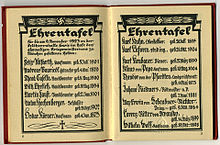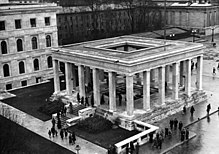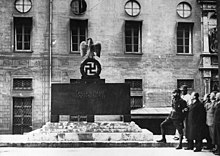Blutzeuge
Appearance



Blutzeuge (English: blood witness) was a term used in Nazi propaganda in the 1930s–1940s in Germany depicting a hero cult of "fallen" Nazis who had been killed during the Nazi ascent to political power. An early Nazi usage of the term was Hitler's dedication at the start of Mein Kampf, which he dedicated to the sixteen National Socialist members killed in the 1923 Beer Hall Putsch.[1]
References
- ^ Andreas Daum; Christof Mauch (26 December 2005). Berlin - Washington, 1800-2000: Capital Cities, Cultural Representation, and National Identities. Cambridge University Press. pp. 145–. ISBN 978-0-521-84117-7.
